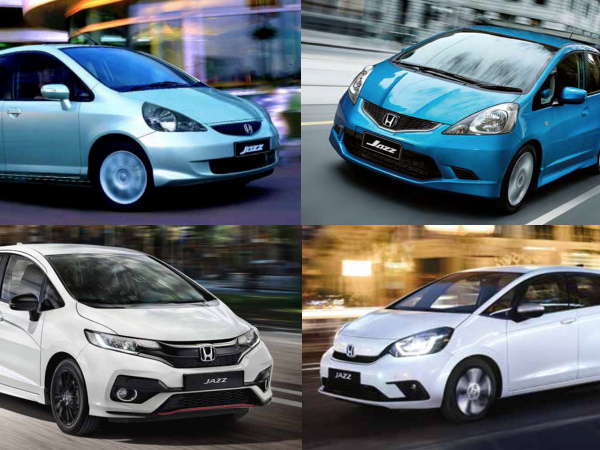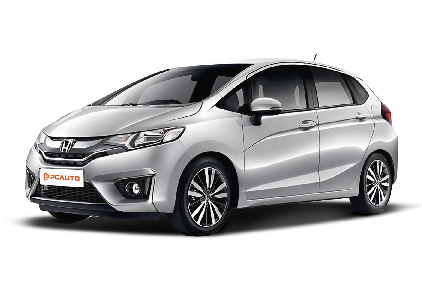Q
where is the honda jazz manufactured
The Honda Jazz – known as the Honda Fit in some markets – is a seriously popular compact hatchback. Its main production hubs are in places like Japan, Thailand, and China. Now, for the Malaysian market, most of the Honda Jazz models you'll find are imported from Thailand. Why Thailand? Well, it's a major automotive manufacturing hub in Southeast Asia, boasting well-established production lines and a mature supply chain. That means it can efficiently churn out high-quality vehicles not just for Malaysia, but for neighboring countries too.
What's really cool is that the Thai-built Honda Jazz matches the quality and specs of the ones made in Japan. On top of that, thanks to the ASEAN Free Trade Agreement, there are tariff benefits. So, Malaysian buyers get to score this car at a more competitive price – that's a win-win.
Beyond that, the Honda Jazz has built a solid reputation in Malaysia over the years. People love its super flexible interior space, reliable powertrains, and impressive fuel efficiency. It's especially perfect for zipping around the city or as a handy family car. If you're in the market for an economical, practical hatchback, the Honda Jazz is definitely one to have on your shortlist.
Special Disclaimer: This content is published by users and does not represent the views or position of PCauto.
Related Q&A
Q
What is the price of Honda Jazz in 2019?
Prices for the 2019 Honda Jazz in local markets vary by trim level. The base 1.5E manual starts around RM70,000, while the top-spec 1.5V Sensing CVT gets close to RM90,000 – exact figures might shift with dealer promotions or optional extras. It keeps Honda's classic practical design, packing a 1.5-liter i-VTEC engine with Earth Dreams tech that balances fuel efficiency with 131 hp, making it perfect for city drives. The standout feature? Jazz's iconic ULTRA seat system with its multiple folding setups – fold the rear seats down and you get a completely flat cargo area. That "magic seat" space concept still shines in its class. The 2019 model also added Honda SENSING on higher trims, bringing features like collision mitigation braking and lane keep assist – pretty advanced stuff for its segment back then. Looking at the used market, the 2019 Jazz holds value steadily. Well-maintained examples typically retain about 60-70% of their original price, thanks to its solid reliability reputation and affordable upkeep costs.
Q
What is the power of Honda Jazz 2019?
The 2019 Honda Jazz comes with a 1.5-liter i-VTEC naturally aspirated engine locally, churning out 120 horsepower (around 89 kW) and 145 Nm of peak torque. It's paired with either a CVT or a 6-speed manual gearbox, delivering smooth, fuel-efficient performance that's perfect for city driving. Built on Honda's classic global small car platform, the Jazz features lightweight construction combined with Earth Dreams technology, resulting in impressive fuel economy—around 5.5L/100km combined. What really stands out is its "Magic Seat" design; despite being a small car, the interior flexibility beats most rivals. Fold the rear seats flat, and you get a huge cargo area. Safety-wise, it gets VSA vehicle stability control, HSA hill-start assist, and higher trims even come with the Honda SENSING active safety suite. When stacked against competitors like the Toyota Yaris and Mazda2, the Jazz holds its own in power figures, but Honda's edge in space utilization and resale value is what keeps it a long-time favorite. If you crave more pep, keep an eye out for the later Jazz RS sport variant, which gets a more performance-focused tune.
Q
What is a 2019 Honda Jazz worth?
The used market price for the 2019 Honda Jazz typically ranges from RM50,000 to RM70,000, with the exact figure depending on factors like vehicle condition, mileage, trim level, and service history. The high-spec V trim or hybrid version can cost around 10% to 15% more than the base models. This car has always been popular in the used car market thanks to the reliability and fuel efficiency of its 1.5-liter i-VTEC engine, plus the flexible Ultra Seats design. It's recommended to check the vehicle's accident history and engine condition through Honda's official channels or third-party inspection agencies before purchasing. Also, note that the 2019 model belongs to the later production run of the third-generation Jazz, which saw improvements in sound insulation and suspension tuning compared to earlier versions. If your budget is tight, consider 2017-2018 models, which are RM10,000 to RM15,000 cheaper, but be aware that some of these might be approaching the 5-year mark and may require more replacement of wear-and-tear parts.
Q
What engine is in the 2019 Honda Jazz?
The 2019 Honda Jazz offers two engine options locally: 1.3-liter and 1.5-liter i-VTEC naturally aspirated gasoline engines. The 1.3-liter unit, coded L13B, delivers 98 horsepower and 127 Nm of torque, while the 1.5-liter (L15B) puts out 118 horsepower and 145 Nm. Both pair with a CVT transmission, balancing smoothness and fuel efficiency. Honda's i-VTEC tech smartly adjusts valve timing and lift to optimize power delivery and fuel economy across different RPM ranges, making it perfect for city driving. What's cool is the Jazz's front-engine, front-wheel-drive layout, combined with Honda's famous "MM Concept" (Maximizing Man Space, Minimizing Machine Space), which results in seriously impressive interior space utilization. In its class, the Jazz stands out for its proven, reliable engine tech, relatively low maintenance costs, and strong resale value—definitely a solid pick for buyers who prioritize practicality and economy. If you're craving more power, keep an eye out for the Jazz RS variant that came later; its 1.5-liter engine gets special tuning for even better performance.
Q
How much horsepower does a 2019 Honda Jazz have?
The 2019 Honda Jazz comes locally with a 1.5-liter i-VTEC naturally aspirated engine, churning out 120 horsepower and 145 Nm of peak torque, paired with a CVT transmission. It delivers smooth, fuel-efficient performance that's perfect for city driving. This car has gained popularity for its flexible interior space and reliability. Even though it's a naturally aspirated unit, the i-VTEC tech does a solid job balancing low-end torque and high-rev power, making it more than enough for daily use. If you want to know more about its performance, the chassis is tuned for comfort, with suspension that effectively soaks up road bumps. Meanwhile, the body rigidity is good, and cornering stability is above average for its class. Plus, the Magic Seat design makes the trunk space super versatile—great for families or anyone who needs to haul stuff regularly. Turbo engines are all the rage these days, but naturally aspirated ones like this Jazz's have lower maintenance costs and proven durability over time. For buyers on a budget or who prioritize practicality, this is a solid pick.
Q
What is the mileage of Honda Jazz 2019?
The 2019 Honda Jazz excels in fuel efficiency, with specific consumption figures varying by powertrain and driving conditions. The 1.5-liter i-VTEC gasoline engine variant delivers a combined fuel economy of approximately 5.5 to 6.0 liters per 100 kilometers, while the hybrid version (where available) achieves even lower fuel consumption. This car continues the Jazz lineup's legacy of flexible space and practicality; despite its compact exterior, the interior features clever design, and the Magic Seat system easily adapts to various cargo needs. In real-world use, fuel economy is influenced by road conditions, driving habits, and maintenance status. It's advisable to perform regular maintenance and check tire pressure to ensure optimal fuel efficiency. When considering a used Jazz, it's recommended to verify the actual mileage through complete service records and pay attention to the condition of key components like the engine and transmission. Among its peers, the Jazz consistently maintains good resale value and reliability, making it suitable for urban commuting and family daily use.
Q
What is the fuel consumption of Honda Jazz 2019?
The fuel efficiency of the 2019 Honda Jazz varies depending on the powertrain. The version equipped with the 1.5-liter i-VTEC naturally aspirated engine delivers an average combined fuel consumption of approximately 5.4 to 5.8 liters per 100 kilometers, while the Hybrid model achieves an even lower 4.5 to 4.8 liters per 100 kilometers. Actual figures may fluctuate based on driving habits, road conditions, and vehicle maintenance status. This car utilizes Honda's Earth Dreams technology, optimizing fuel economy through a lightweight body and efficient transmission system, making it ideal for city commuting. To further reduce fuel consumption, it is recommended to maintain a steady speed, avoid sudden acceleration and hard braking, and regularly replace the air filter and spark plugs. In the same class, models with similar fuel efficiency include the Toyota Yaris, but the Jazz is favored by many consumers for its flexible interior space and reliability. Notably, hybrid models can significantly save fuel in congested traffic through electric motor assistance, making them more economical in the long run.
Q
What is the fuel economy of Honda Jazz 2019?
The 2019 Honda Jazz delivers impressive fuel efficiency. Powered by a 1.5-liter i-VTEC engine paired with a CVT transmission, official figures put the combined fuel consumption at around 5.5 to 5.8 liters per 100 kilometers. Actual mileage can vary slightly depending on driving habits and road conditions—you might see a bit higher consumption in city driving, while highway cruising is more fuel-efficient. It features Honda's Earth Dreams technology, which optimizes combustion efficiency and power delivery, striking a good balance between peppy performance and fuel savings. As a small hatchback, the Jazz is popular for its nimble handling and efficient fuel economy, making it perfect for city commuting. If saving fuel is a priority, regular vehicle maintenance, keeping tires properly inflated, and adopting a smooth driving style are all simple tips that can help boost fuel efficiency even more. Among its peers, the Jazz sits in the upper-middle range for fuel economy, making it a solid pick for budget-conscious buyers looking to cut down on running costs.
Q
How much is the Honda Jazz 2019?
The 2019 Honda Jazz typically ranges from around RM50,000 to RM70,000 in the used car market. The exact price depends on factors like condition, mileage, trim level, and location, with higher-spec V variants or hybrid models usually costing more. This car is popular for its flexible interior space, reliable 1.5-liter i-VTEC engine, and fuel efficiency—perfect for city driving. It also holds its value pretty well among small cars. For a more accurate valuation, check local used car platforms or dealers for real-time prices. Don’t forget to inspect the service records and accident history too. The Jazz’s Magic Seats let you adjust the cargo space easily, making it great for families. Plus, some 2019 models come with the Honda Sensing safety suite, including collision warning and lane-keeping assist, which boosts driving safety. If you’re on a tighter budget, you could compare it to rivals like the 2019 Toyota Yaris or Mazda 2, but the Jazz still edges them out in practicality and brand reputation.
Q
How much is a 2019 Honda Jazz?
Used 2019 Honda Jazz models typically range in price from RM50,000 to RM70,000, with the exact figure depending on condition, mileage, trim level, and whether it's still under the original factory warranty. Higher-spec V trims or hybrid versions will command a bit more. This car is known for its clever space design and reliable 1.5-liter i-VTEC engine, delivering great fuel economy that's perfect for city driving. The Magic Seat system also makes hauling larger items a breeze. If you're looking at a used Jazz, make sure to check the service history and accident records to avoid major repair issues. Factory-certified pre-owned units often come with extended warranties, so they're worth prioritizing. Competitors like the Toyota Yaris or Mazda 2 are worth a look too, but the Jazz has always held steady in practicality and resale value, making it a top pick in the subcompact segment.
Popular Cars
Model Year
Car Compare
Car Photo
Latest Q&A
Q
How much does it cost to buy a 2024 Tesla Model 3?
The 2024 Tesla Model 3 starts at around RM 175,000, but the final price depends on your chosen configuration and add-ons. Opt for the Long Range or Performance version, and you’re looking at a higher tag.
As Tesla’s entry-level model, it packs cutting-edge EV tech, including 500+ km of range on a single charge and standard Autopilot for both daily commutes and road trips. Just keep in mind extra costs like insurance, registration, and potential home charger installation.
Tesla’s Supercharger network is expanding locally, with solid coverage in major cities, making charging hassle-free. Maintenance costs? Typically lower than gas cars—no oil changes, fewer moving parts—so long-term savings add up.
If you’re after more thrills, the Performance variant hits 0-100 km/h in roughly 3 seconds. Plus, government EV tax perks help soften the upfront cost.
Q
How reliable is the 2024 Model 3?
The 2024 Model 3 delivers solid reliability, thanks to Tesla’s continuous software updates and hardware refinements. Key areas like the battery management system and Autopilot have seen multiple optimizations, leading to a noticeable drop in failure rates.
This model features a stiffer body structure and an improved suspension setup, offering a smoother ride. Upgraded interior materials also help reduce cabin rattles—a common gripe with earlier builds.
EV maintenance costs remain low (no oil changes, etc.), though it’s wise to periodically check battery health and charging components for long-term performance. For shoppers eyeing EVs, charging infrastructure and home charging options matter—thankfully, public chargers are expanding fast, making daily use more convenient.
If you frequently road-trip, planning charging stops ahead helps. While the range easily handles daily drives, a little route prep goes a long way in maximizing the experience.
Q
What is the battery range of the Tesla Model 3 2025?
The battery range of Tesla Model 3 2025 is expected to be optimized based on existing models, and specific data needs to be released officially. However, referring to the EPA range of the 2024 rear wheel drive version, which is about 438 kilometers, and the high-performance version, which is about 513 kilometers, the 2025 model may further improve, especially in terms of battery technology or energy efficiency management. For electric vehicles, the range is greatly affected by driving habits, road conditions, and climate. Air conditioning may slightly reduce the range in hot weather, but the battery thermal management system can usually maintain stable performance. In terms of charging, Model 3 supports super fast charging, which can replenish about 250 kilometers of range in about 15 minutes, while home charging stations require 6-8 hours to fully charge. Daily commuting or long-distance travel are practical enough, it is recommended to follow Tesla's official website or local showroom for the latest information.
Q
Is the 2024 Model 3 worth the price?
The 2024 Model 3 strikes an impressive balance between price and performance. Its upgraded range, more refined interior, and enhanced autonomous driving features genuinely boost its competitiveness—especially for tech-savvy, eco-conscious buyers.
Tesla optimized the battery efficiency this time around, making it suitable for both daily commutes and longer trips, while the handling stays true to the brand’s signature responsiveness. If your budget allows and you’re open to EVs, this one’s worth considering—though a test drive is wise to see if it matches your driving style.
That said, local charging access matters. While public chargers are becoming more common, home installation costs should factor into your budget. Alternatives in this price range exist, so cross-shop specs and service policies (like warranty coverage or charging network support) to make a well-rounded decision.
Q
How many miles does a 2024 Tesla Model 3 get?
The 2024 Tesla Model 3 offers varying range figures depending on configuration. The rear-wheel-drive (RWD) version delivers an EPA-estimated 272 miles (approx. 438 km), while the all-wheel-drive Long Range model pushes that to around 341 miles (roughly 549 km). Real-world range may vary slightly based on driving style, road conditions, and climate.
As a pure EV, the Model 3 achieves this efficiency thanks to its advanced battery management system and lightweight design. It also supports fast charging—at a Tesla Supercharger, you can add up to 200 km of range in about 15 minutes. Whether for daily commutes or longer trips, that’s more than enough for most drivers, especially with charging infrastructure becoming more widespread.
If you need to maximize range, tweaking your driving mode or using the car’s built-in energy optimization features can help squeeze out even more miles.
View MoreRelated News

Auto Arena: Which generation of Honda Jazz (Fit) is your favorite?
LienMay 21, 2024

Honda and Red Bull's eight-year partnership comes to an end. Honda will start a collaboration with Aston Martin.
JamesDec 10, 2025

Additional features without extra cost! Honda City RS series upgraded, equipped with a 360° Surround View Camera System
Kevin WongDec 9, 2025

A brand new Honda Prelude is expected to arrive in Malaysia by 2026, featuring the same hybrid system as the Civic.
MichaelDec 8, 2025

Honda Prelude priced as high as $42,000, which makes me nostalgic for the old Prelude
JamesNov 20, 2025
View More













 Cars
Cars




Pros
Cons